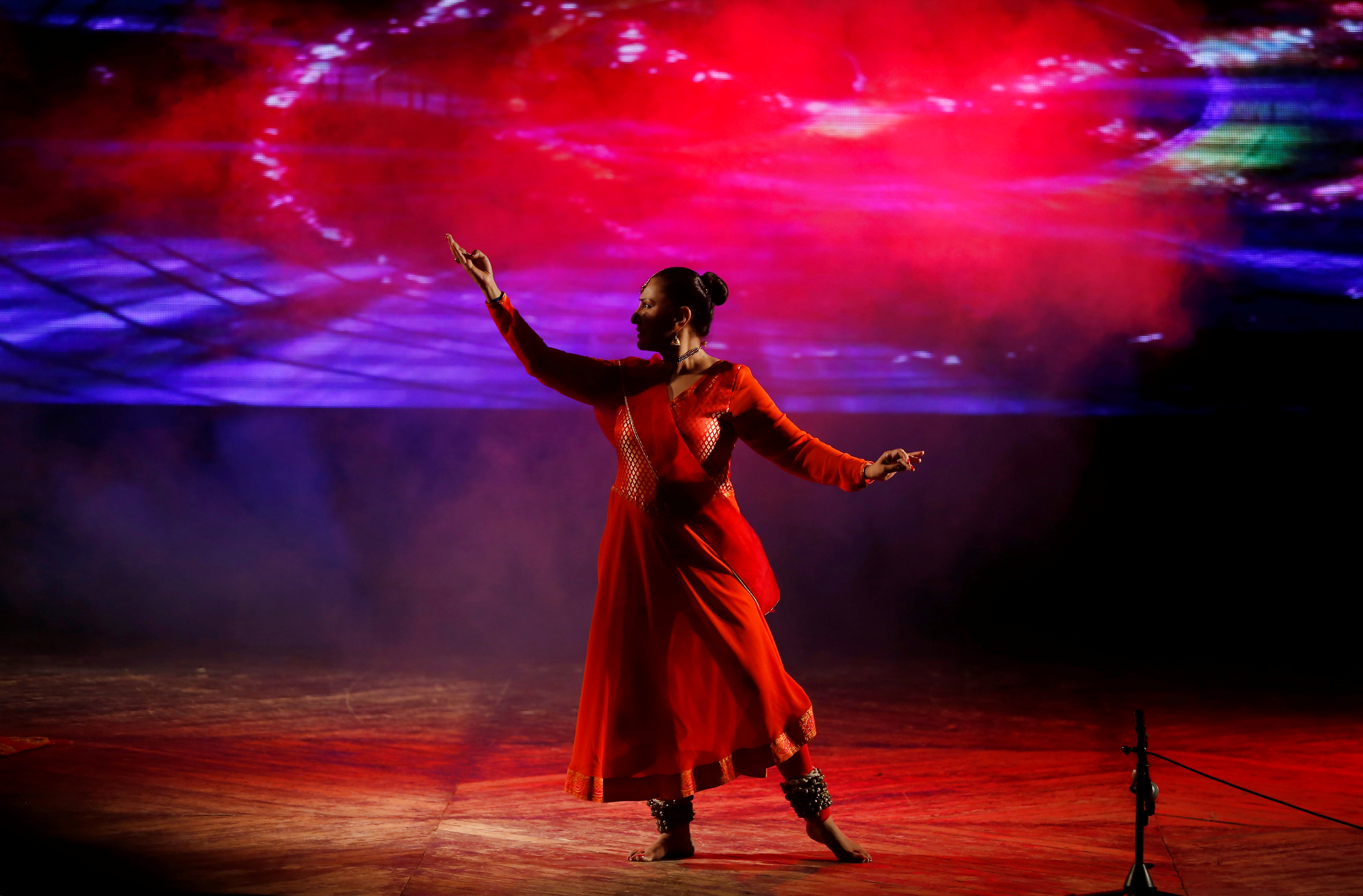Pee Gate: Is There Any Truth to Shankar Mishra's Claim That Kathak Dancers Pee Themselves? EXPLAINED

views
A woman, who had accused her co-passenger Shankar Mishra of urinating on her on an Air India flight, on Saturday rejected the claims made by him that she seems to have urinated on herself, saying these are “completely false and concocted and by their very nature are disparaging and derogatory”.
Mishra’s lawyer claimed on Friday that he did not commit the crime and that she urinated while arguing against a police petition seeking revision of a magisterial court order refusing his custodial interrogation.
He added, “The accused, instead of being remorseful for the utterly disgusting act committed by him, has adopted a campaign of spreading misinformation and falsities with the intent of further harassing the victim.” Mishra’s counsel had told the court that the complainant was suffering from some disease related to prostate, which several ‘kathak dancers’ seem to suffer from.

This claim, of kathak dancers suffering from urinary incontinence, has ignited debate. Various veterans of the dance form have denounced the claim.
Shankar Mishra had earlier denied the charges and told a Delhi court that the complainant woman urinated on herself due to incontinence. “The seat of the complainant woman was blocked. He (Mishra) was unable to travel there. The woman suffers from incontinence. She peed on herself. She is a Kathak dancer, and 80% of Kathak dancers have this problem,” Mishra’s lawyer told ANI.
First, Let’s Understand What Urinary Incontinence Is:
The involuntary leakage of urine is known as urinary incontinence, according to Medical News Today. It denotes urinating when one does not wish to. The urinary sphincter’s control is either lost or weakened.
Urinary incontinence is a common issue that affects a large number of people. According to the The American Urological Association, one-quarter to one-third of men and women in the United States suffer from the problem.
Women are more likely than men to suffer from urinary incontinence, the report states. It is estimated that 30% of females aged 30-60 suffer from it, compared to 1.5-5 percent of men in the US.
What Causes the Problem?
- The most common cause of stress incontinence is a weakening or damage to the muscles used to prevent urination, such as the pelvic floor muscles and the urethral sphincter, states the National Health Service (UK).
- Overactivity of the detrusor muscles, which control the bladder, is usually the cause of urge incontinence.
- Overflow incontinence is frequently caused by a blockage or obstruction in your bladder, which prevents it from emptying completely.
- Total incontinence can result from a birth defect in the bladder, a spinal injury, or a small, tunnel-like hole that can form between the bladder and a nearby area (fistula).
Certain factors can increase the likelihood of urinary incontinence, including:
- Obesity
- Pregnancy and vaginal birth
- A family history of incontinence
- Increasing age – although incontinence is not an unavoidable part of ageing
Do Dancers Suffer From Urinary Incontinence?
While we did not come across any research specific to urinary incontinence in Kathak dancers, there are studies on various athletes and dancers suffering from the issue.
A 2018 study, ‘Screening of Urinary Incontinence in Female Dancers-A Cross Sectional Study‘ in the Research Journal of Obstetrics and Gynecology said 22.5% of female dancers had urinary incontinence, and that dancers’ BMI and training period had a positive correlation with urinary incontinence.
The study sought to compare the prevalence of urinary incontinence in female dancers to that of non-dancers of the same age group in Belagavi.

Overall, 124 females were screened, with 62 dancers and 62 non-dancers (age matched control) reporting urine loss while participating in their various dance forms. Fourteen female dancers (22.5%) reported urine loss while participating in their various dance forms. Hip hop had the highest incidence of incontinence (about 50%), followed by Bharatnatyam (28%).
What Did the Study Say About the Causes?
The study said urinary incontinence was more common between 6 and 10 years of training, owing to overuse or recurring injuries, rather than acute injuries, which could have resulted from postures attained and increased lower extremity flexibility.
Another cause of urinary incontinence could be co-activation of abdominal and pelvic floor muscles in response to an increase in intra-abdominal pressure to stabilise lower limbs, as seen during fixed posture. As a result, in the study, 18.18% of dancers experienced urinary incontinence in the first 5 years of training and 27.59% of dancers experienced urinary incontinence in the sixth to tenth years of training, implying that as training period increases or repeated exposure to high forces of pelvic floor muscles increases the risk of urinary incontinence in female dancers.
Carol Casper conducted a study with athlete and non-athlete females aged 18-25 years and discovered no significant difference in pelvic floor muscle activity between the two groups, implying that pelvic floor muscle activity alone does not predict urinary incontinence.
Previous research has shown that BMI and urinary incontinence are strongly correlated; similarly, the 2018 study found a positive correlation between BMI and urinary incontinence in dancers, i.e., as dancers’ BMI increases, so does their urinary incontinence. This could be due to a systemic mechanism in which there is a generalised increase in adipose tissue in the body, which can cause vascular damage to the pelvic floor muscle and lead to detrusor and sphincter muscle dysfunction through oxidative stress, the study said.
Dancers reported lower quality of life in the current study, which could be due to increased BMI, which causes incontinence, thereby increasing physical limitations, role limitations, and resulting in lower general health of dancers.
But Dancing Is Also Known to Ease Urinary Incontinence
A 2014 study of older women with mixed urinary incontinence found out that a programme combining pelvic floor muscle exercises with virtual-reality rehabilitation in the form of dancing proved to be an effective and satisfying treatment.
The study included 24 women aged 65 and up (mean age 70.5 years) who experienced at least two weekly episodes of mixed urinary incontinence. The participants were assessed twice: once before and once after a 12-week training programme that included pelvic floor muscle exercises and virtual-reality rehabilitation, said a report by Renal and Urology News.

Chantale Dumoulin, PhD, of the School of Rehabilitation at the University of Montreal in Quebec, and colleagues reported online ahead of print in Neurourology and Urodynamics that the majority of study participants (91%), adhered to home exercise (92%), and completed the three evaluations (96%).
The frequency and quantity of urine leakage decreased more after intervention than in the control group, and patient-reported symptoms and quality of life improved significantly.
The dance period also allowed the women to exercise their traditionally static pelvic floor muscles and learn how to contract those muscles during daily activity to prevent urine leakage.
What Have Kathak Dancers Said?
Many Kathak dancers have denounced the claim, calling it false.
A Kathak dancer Anindita Neogy Anaam, writing for ABP news, said, “there is no scientific support for this misleading narrative. There is zero truth to this baseless claim of Kathak dancers suffering from incontinence. A Kathak performer can be a male or a female, there is no gender segregation in the modern dance world. And contrary to the allegation that most dancers suffer from this bladder issue, they in fact due to their active physical regime and years of training develop strong pelvic muscles that support their core, resulting in a positive effect on urinary incontinence-related muscle strength.”
Rashmi Vaidialingam, a lawyer and a Kuchipudi dancer told the Hindustan Times, “This is the most ridiculous thing I’ve heard. How can someone think of something like this? There must be a medical check-up to confirm, and it seems like the man was under the influence of alcohol and couldn’t control himself. Shame on the passengers, crew and all the eyewitnesses who are not reacting strongly to this incident. This is what happens when you live in a patriarchal society. The man and his lawyer have come up with a ridiculously defensive statement. Dancers always have control over their bodies, and what does the lawyer know about this?”
Read all the Latest Explainers here




















Comments
0 comment